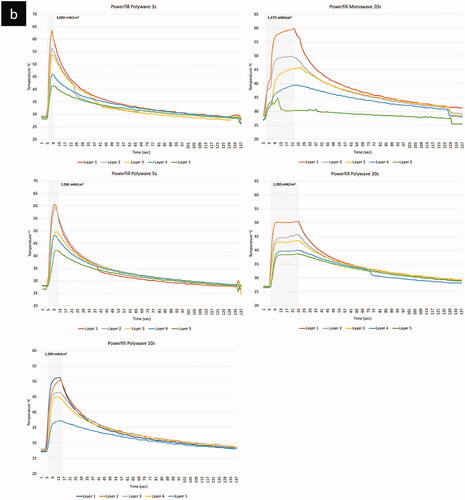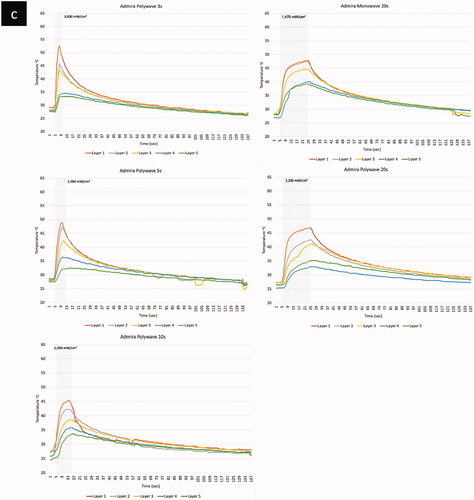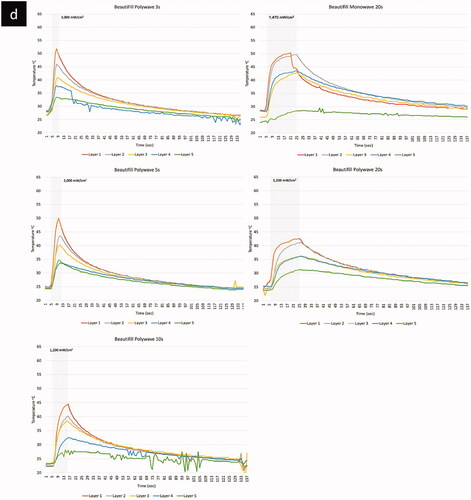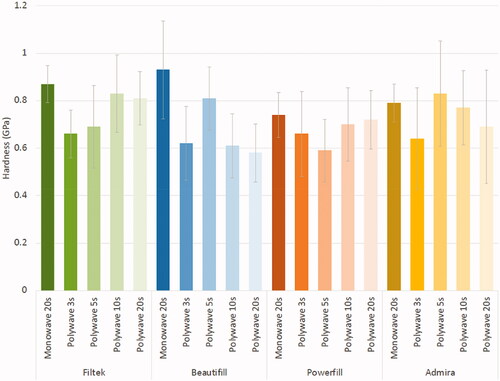Figures & data
Figure 1. (a) Photograph showing the experimental setup for measurement of the heat generated by bulk-fill composite resins during photoactivation. A clamp was used to hold the light curing unit (LCU) in place and five data loggers connected to thermocouples were used to measure temperature change of each layer; (b and c) Diagram showing the design and dimension of the 3 D printed resin mould.
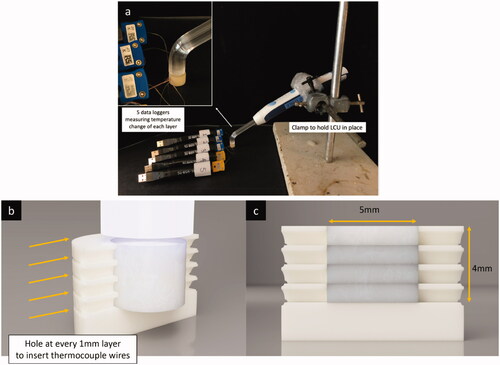
Table 1. Composition of the materials tested as provided by the manufacturer.
Figure 2. Diagram showing the specimen prepared for nanoindentation and FTIR analysis; The specimen was ground down to different thicknesses.
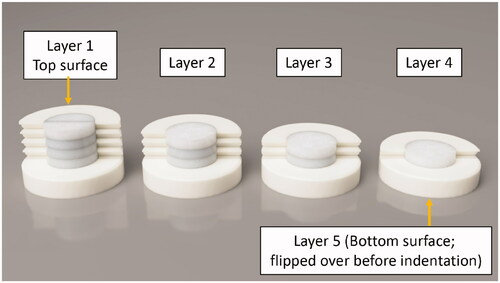
Table 2. Light intensity characterisation (mW/cm2) of light curing units (LCUs) used depending on the curing modes, measued by a radiometer (n = 10).
Table 3. Temperature data measured at each layer in all four BCRs cured by a monowave and a polywave light curing unit at in various light intensities and corresponding curing time.
Figure 4. 3-dimensional temperature profiles of the four BCRs showing the comparisons when cured with different LCUs and light curing intensities (a) by polywave 3 s; (b) polywave 20 s.
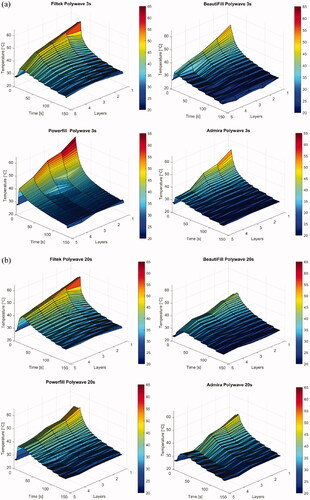
Table 4. Hardness (GPa) measured at each layer in all four BCRs cured by a monowave and a polywave light curing unit at in various light intensities and corresponding curing times.
Figure 6. Graphs showing the correlation between the hardness and degree of conversion of the four BCRs when cured with different LCUs and light curing durations.
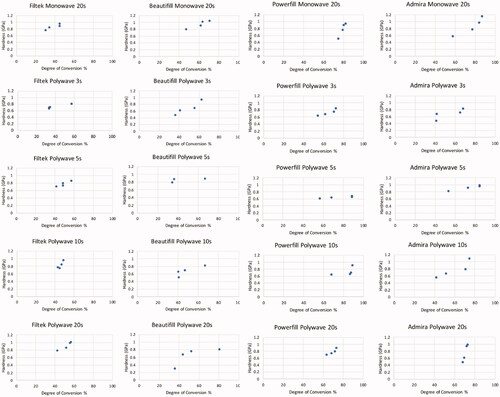
Table 5. Degree of conversion (%) in all four RBCs cured by a monowave and a polywave light curing unit in various light intensities and corresponding curing times.
Data availability statement
Data will be available upon request.


